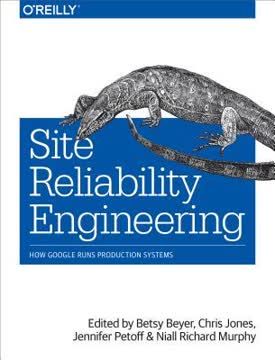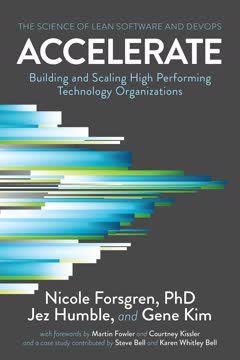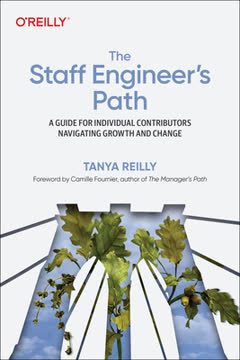つの重要なポイント
1. オブザーバビリティがソフトウェアシステムの理解を革新する
オブザーバビリティとは、システムがどんな状態にあっても、それを理解し説明できる能力のことです。
パラダイムシフト。 オブザーバビリティは制御理論の概念を現代のソフトウェアシステムに適用し、エンジニアが外部出力を通じて内部状態を理解できるようにします。従来のモニタリングが事前定義されたメトリクスや閾値に依存するのに対し、オブザーバビリティはアドホックなクエリやシステムの挙動の探索を可能にします。
複雑性への対応。 システムがより分散化し動的になるにつれて、従来のモニタリングの限界が明らかになります。オブザーバビリティは以下のような環境で特に有効です:
- マイクロサービスアーキテクチャが複雑な依存関係を生む
- クラウドネイティブなデプロイメントが一時的なリソースを導入する
- 継続的デリバリープラクティスが頻繁な変更をもたらす
文化的影響。 オブザーバビリティの実践を採用することで、チームのプロダクションシステムへのアプローチが変わります:
- 反応的な対応ではなく、積極的な探索を奨励する
- チームメンバー全員がシステムを理解できるようにする
- 開発と運用の間のサイロを打破する
2. メトリクスではなくイベントがオブザーバビリティの基礎を成す
オブザーバビリティの定義を受け入れるなら、それは未知の未知についてのものであり、事前に予測や予見なしにどんな質問でもでき、システムの内部状態を理解できることを意味します。この定義を満たすためには、いくつかの技術的な前提条件を満たす必要があります。
豊富なコンテキスト。 イベントはシステムの相互作用の完全なコンテキストをキャプチャします:
- リクエストパラメータ
- システム状態
- パフォーマンスメトリクス
- ユーザー識別子
- ビジネス固有のデータポイント
柔軟性。 事前集計されたメトリクスとは異なり、イベントは以下を可能にします:
- データの任意のスライスとダイス
- 高カーディナリティおよび高次元のクエリ
- 以前は知られていなかったパターンや相関の発見
実装。 構造化されたイベントは以下のようにするべきです:
- 重要なシステム相互作用ごとに発行される
- 多くのフィールドを持つように設計される
- 技術的およびビジネスのコンテキストの両方をキャプチャできる
3. トレースはイベントをつなぎ合わせることで重要なコンテキストを提供する
オブザーバブルなシステムでは、トレースは単に相互に関連する一連のイベントです。
エンドツーエンドの可視性。 トレースは分散システム全体のイベントを接続し、以下を明らかにします:
- サービス依存関係
- パフォーマンスボトルネック
- エラーの伝播
主要コンポーネント:
- トレースID:全体のリクエストフローの一意の識別子
- スパンID:トレース内の各ステップの識別子
- ペアレントID:スパン間の階層関係を確立する
- タイムスタンプと期間:タイミング情報をキャプチャする
従来のユースケースを超えて。 トレースの概念は以下にも適用できます:
- パフォーマンス分析のための非分散システム
- 処理ステップを理解するためのバッチジョブ
- サーバーレスワークフローをトレースするためのラムダ関数
4. オブザーバビリティは基本原則からのデバッグを可能にする
基本原則とは、他の仮定から導かれたものではないシステムに関する基本的な仮定のことです。
科学的アプローチ。 オブザーバビリティツールは体系的なデバッグプロセスをサポートします:
- システムの全体像から始める
- 観察された挙動を期待値と照らし合わせる
- パターンを特定するために次元を体系的に探索する
- 問題を特定するためにフィルタリングとドリルダウンを行う
- 根本原因が発見されるまで繰り返す
自動化。 高度なオブザーバビリティツールは以下を行うことができます:
- 異常な挙動をベースラインと比較する
- イベント属性の重要な違いを強調する
- 調査の潜在的な領域を提案する
文化的シフト。 基本原則からのデバッグは:
- 部族的な知識への依存を減らす
- 経験の浅いチームメンバーをエンパワーする
- 好奇心と探索を奨励する
5. SLOとエラーバジェットが実行可能なアラートを作成する
エラーバジェットの消費アラートは、現在の消費率が続くと将来のSLO違反が発生する可能性があることを早期に警告するために設計されています。
信頼性の定義。 サービスレベルオブジェクティブ(SLO)は以下を提供します:
- システムの信頼性に関する明確な目標
- エンジニアリングとビジネスのステークホルダー間の共通言語
- 信頼性と機能開発の間のトレードオフを行うためのフレームワーク
エラーバジェット。 許容される不信頼性のレベルを定量化することで、エラーバジェットは:
- 管理すべき有限のリソースを作成する
- 積極的な信頼性向上を奨励する
- 安定性を新機能より優先する時期を客観的に測定する
実行可能なアラート。 SLOベースのアラートは:
- 顧客に影響を与える問題に焦点を当てる
- ノイズを排除してアラート疲れを軽減する
- 優先順位付けと意思決定のためのコンテキストを提供する
6. サンプリング戦略はリソース使用を最適化しつつ忠実度を維持する
スケールに応じて、リソースコストを最適化するためにデータセットを精緻化する必要が重要になります。しかし、リソースの削減がそれほど緊急でない小規模なスケールでも、保持するデータを精緻化することで貴重なコスト削減が得られます。
バランスの取れたアプローチ。 サンプリング戦略は以下を目指します:
- データ量と関連コストの削減
- 分析のための統計的精度の維持
- 重要なイベントや異常値の保存
主要技術:
- 一定確率サンプリング:シンプルだが希少なイベントを見逃す可能性がある
- 動的レートサンプリング:トラフィック量に基づいて調整する
- コンテンツベースサンプリング:属性に基づいてイベントを優先する
- ヘッドベース対テールベースサンプリング:サンプリング決定が行われるタイミングを考慮する
実装の考慮事項:
- サービス間での一貫したサンプリング
- 分散トレースにおけるサンプリング決定の伝播
- 元のデータ分布を再構築する能力
7. オブザーバビリティは分散システムの時代におけるビジネスの必須要件
システムにオブザーバビリティを導入するビジネスケースは、サービス内の問題の検出時間(TTD)と解決時間(TTR)を短縮することです。
具体的な利益:
- インシデント解決の迅速化
- 顧客満足度の向上
- エンジニアのバーンアウトの軽減
- 機能開発の速度向上
文化的変革。 オブザーバビリティの実践は:
- エンジニアが自分のシステムを理解し所有することをエンパワーする
- 開発、運用、ビジネスチーム間のサイロを打破する
- 継続的な改善と学習の文化を育む
実装戦略:
- 影響の大きい痛点のあるサービスから始める
- クイックウィンを通じて価値を実証する
- ツールとトレーニングに投資する
- 改善のための明確な指標を設定する(例:TTD、TTR)
- 組織全体に徐々に拡大する
最終更新日:
FAQ
What's "Observability Engineering: Achieving Production Excellence" about?
- Focus on Observability: The book is centered around the concept of observability in modern software systems, explaining its importance and how it differs from traditional monitoring.
- Authors' Expertise: Written by Charity Majors, Liz Fong-Jones, and George Miranda, the book draws on their extensive experience in software engineering and observability practices.
- Comprehensive Guide: It provides a detailed analysis of what observability means, how to implement it, and its impact on team dynamics and organizational culture.
- Practical Insights: The book offers practical advice on building a culture of observability and addresses challenges associated with scaling observability practices.
Why should I read "Observability Engineering: Achieving Production Excellence"?
- Modern Relevance: As software systems become more complex, understanding observability is crucial for maintaining and improving system performance.
- Expert Guidance: The authors are leaders in the field, offering insights that are both practical and based on real-world experience.
- Cultural Shift: The book emphasizes the cultural changes necessary for successful observability adoption, making it relevant for both technical and managerial roles.
- Actionable Advice: It provides actionable steps and strategies for implementing observability in your organization, making it a valuable resource for engineers and managers alike.
What are the key takeaways of "Observability Engineering: Achieving Production Excellence"?
- Observability vs. Monitoring: Observability is about understanding system behavior in real-time, while monitoring is about tracking known issues.
- Structured Events: The book highlights the importance of structured events as the building blocks of observability.
- Cultural Importance: Successful observability requires a cultural shift within organizations, emphasizing collaboration and continuous improvement.
- Scalability and Efficiency: The book discusses strategies for scaling observability practices and making them efficient, even in large, complex systems.
What are the best quotes from "Observability Engineering: Achieving Production Excellence" and what do they mean?
- "Observability is not about the data types or inputs, nor is it about mathematical equations. It is about how people interact with and try to understand their complex systems." This quote emphasizes the human aspect of observability, focusing on interaction and understanding rather than just technical metrics.
- "Observability is the solution to that gap." This highlights observability as a critical tool for bridging the gap between theoretical system design and practical, real-world operation.
- "Observability allows you to understand and explain any state your system can get into, no matter how novel or bizarre." This underscores the comprehensive nature of observability, enabling engineers to diagnose and resolve unexpected issues.
How does "Observability Engineering" define observability?
- Mathematical Origins: The book traces the term "observability" back to its mathematical roots, where it describes the ability to infer internal states from external outputs.
- Software Adaptation: In software, observability is adapted to mean understanding the internal state of a system based on its outputs, without needing to predict issues in advance.
- Key Characteristics: Observability involves structured events, high cardinality, and the ability to ask arbitrary questions about system behavior.
- Practical Application: It is about enabling engineers to debug systems in real-time, focusing on unknown unknowns rather than just known issues.
What is the difference between observability and monitoring according to "Observability Engineering"?
- Scope of Understanding: Observability is about understanding the system's internal state, while monitoring focuses on tracking known issues and metrics.
- Proactive vs. Reactive: Observability allows for proactive problem-solving by enabling real-time insights, whereas monitoring is often reactive, alerting to predefined conditions.
- Data Granularity: Observability relies on high-cardinality data and structured events, providing a more detailed view than the aggregated metrics used in monitoring.
- Cultural Shift: Implementing observability requires a cultural change within organizations, promoting collaboration and continuous improvement.
How does "Observability Engineering" suggest implementing observability in an organization?
- Start with Pain Points: The book advises starting with the most problematic areas to quickly demonstrate the value of observability.
- Iterative Instrumentation: It recommends iteratively building out instrumentation, using each debugging situation as an opportunity to enhance observability.
- Community Engagement: Joining community groups can provide valuable insights and support from others facing similar challenges.
- Buy vs. Build: The authors suggest buying observability tools rather than building them in-house to quickly realize benefits and focus on solving problems.
What role do structured events play in "Observability Engineering"?
- Building Blocks: Structured events are the fundamental building blocks of observability, capturing detailed information about system behavior.
- Data Granularity: They provide the necessary granularity to understand and debug complex systems, allowing for high-cardinality queries.
- Event Scope: Each event records everything that happens during a request, enabling engineers to reconstruct and analyze system states.
- Flexibility: Structured events allow for arbitrary slicing and dicing of data, facilitating deep insights into system performance.
How does "Observability Engineering" address the challenges of scaling observability?
- Sampling Strategies: The book discusses various sampling strategies to manage data volume and resource constraints while maintaining data fidelity.
- Efficient Data Handling: It emphasizes the importance of efficient data storage and analysis to handle large-scale observability data.
- Cultural Considerations: Scaling observability also involves cultural changes, ensuring that teams are equipped and motivated to use observability tools effectively.
- Iterative Improvement: The authors advocate for continuous improvement and adaptation of observability practices as systems and organizational needs evolve.
What is the Observability Maturity Model in "Observability Engineering"?
- Framework for Evaluation: The Observability Maturity Model provides a framework for evaluating an organization's observability capabilities and progress.
- Key Capabilities: It identifies key capabilities such as resilience, code quality, complexity management, release cadence, and user behavior understanding.
- Continuous Improvement: The model emphasizes continuous improvement and adaptation, recognizing that observability practices are never "done."
- Outcome-Oriented Goals: It encourages organizations to set outcome-oriented goals and prioritize capabilities that align with their business objectives.
How does "Observability Engineering" relate to DevOps and SRE practices?
- Complementary Practices: Observability is closely related to DevOps and SRE practices, enhancing their effectiveness by providing deeper insights into system behavior.
- Feedback Loops: It supports shorter feedback loops and continuous improvement, key principles of both DevOps and SRE.
- Cultural Alignment: Observability aligns with the cultural shifts promoted by DevOps and SRE, emphasizing collaboration, ownership, and proactive problem-solving.
- Enhanced Reliability: By integrating observability, organizations can achieve higher reliability and performance, core goals of DevOps and SRE practices.
What are the practical benefits of adopting observability according to "Observability Engineering"?
- Faster Issue Resolution: Observability enables faster detection and resolution of issues, reducing downtime and improving system reliability.
- Improved Customer Satisfaction: By understanding and addressing user experience issues, organizations can enhance customer satisfaction and retention.
- Increased Innovation Capacity: With less time spent on firefighting, teams can focus more on delivering new features and innovations.
- Cultural Transformation: Observability fosters a culture of continuous improvement, collaboration, and proactive problem-solving, leading to more resilient and adaptable organizations.
レビュー
『Observability Engineering』は賛否両論の評価を受けており、平均評価は5点満点中3.78点である。読者は本書のオブザーバビリティの概念紹介や、社会技術システムへの強調を評価している。しかし、多くの読者は内容が繰り返しであり、実践的な例が不足していると感じ、オブザーバビリティとモニタリングの区別に過度に焦点を当てていると指摘している。革新的なアイデアを称賛する声もある一方で、長さや技術的な深みの欠如を批判する意見もある。本書はオブザーバビリティを理解するための良い出発点とされているが、エンジニア向けの詳細な実装ガイダンスを提供する点では不十分である。
Similar Books














